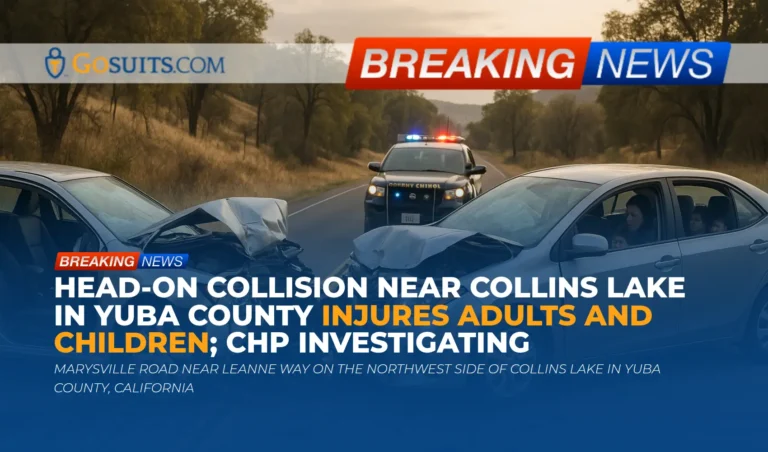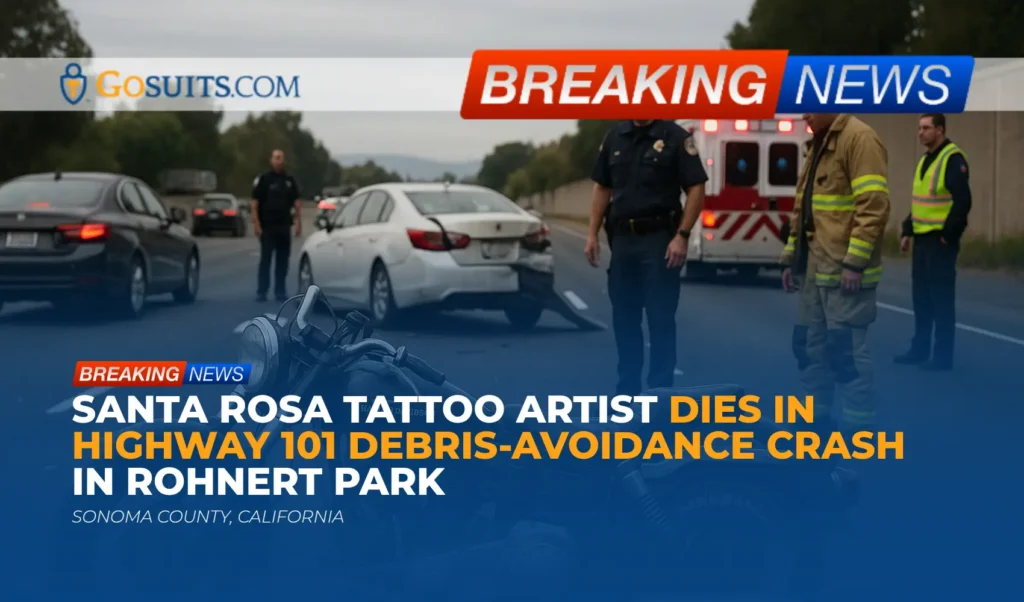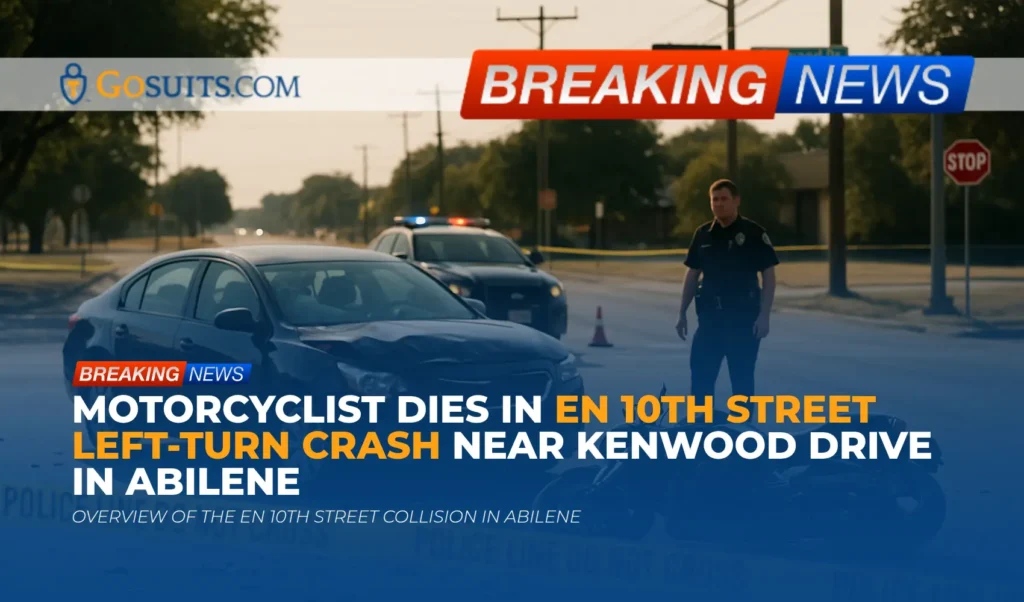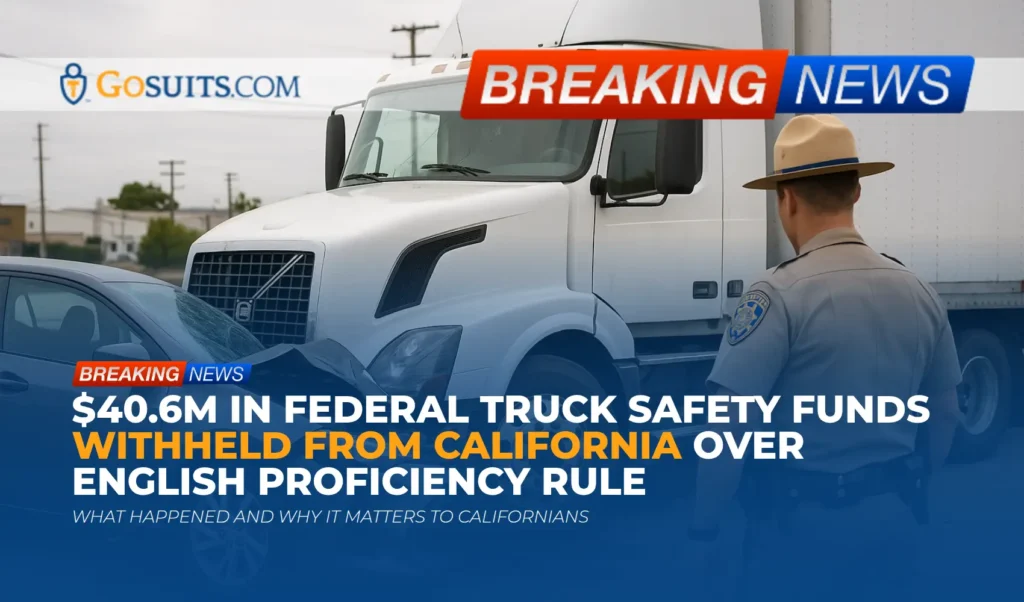- What we know about the head-on collision near Collins Lake
- Where and when it happened
- Injuries reported and emergency response
- Status of the investigation and possible contributing factors
- Legal rights after a California head-on crash
- Who may be responsible under California law
- Insurance considerations and common pitfalls
- Important records and where to get them
- Practical steps to protect a potential injury claim
- Safety context for rural two-lane roads and head-on collisions
- Key California deadlines and required filings
- What to do before speaking with any insurance company
- Commentary from Gosuits Yuba County, California Personal Injury Attorney
- Why timely action matters
- Sources
What we know about the head-on collision near Collins Lake
According to information released by the California Highway Patrol’s Yuba-Sutter division and reported by local media, a head-on collision occurred near Collins Lake in Yuba County on Monday at approximately 5:15 p.m. Both vehicles involved were silver Toyota Corollas traveling in opposite directions on Marysville Road near Leanne Way, on the northwest side of the lake. Investigators indicated that a 56-year-old woman driving northbound drifted into the oncoming lane and collided head-on with a southbound Corolla driven by a 53-year-old man. The crash resulted in major injuries to the northbound driver and injuries to the southbound driver and passengers, including three children. Emergency crews closed Marysville Road for nearly two hours to investigate and clear the scene. The incident remains under investigation by CHP, and the reason the northbound vehicle crossed the center line has not yet been determined.
Where and when it happened
The collision took place on Marysville Road near Leanne Way on the northwest side of Collins Lake in Yuba County, California. The time was about 5:15 p.m., a period when daylight and traffic conditions can vary seasonally. Rural two-lane roads in that area are often undivided and can present unique risks, particularly in curves or areas with limited shoulders.
Injuries reported and emergency response
CHP stated that the 56-year-old northbound driver who veered into the wrong lane suffered major injuries and was airlifted to a hospital in Chico. The 53-year-old southbound driver sustained a broken arm and other injuries and was airlifted to a hospital in Roseville. A 36-year-old woman traveling as a passenger in the southbound vehicle and three children suffered minor injuries and were transported to a hospital in Yuba City. The road was closed for close to two hours during the emergency response and preliminary investigation.
Air medical transport following a serious crash is common in rural areas where trauma centers may be some distance away. Federal patient billing protections can apply to air ambulances in many situations, though the details can be complex and depend on insurance and the type of transport. It can be helpful to review bills carefully and understand any rights to dispute surprise charges under federal rules.
Status of the investigation and possible contributing factors
CHP has not yet determined why the northbound driver drifted into the oncoming lane. In general, lane departure crashes of this type can involve a range of contributing circumstances, including distraction, inattention, fatigue, medical events, roadway alignment, surface conditions, or vehicle-related issues. At this stage, it is important to avoid speculation. CHP collision investigations typically include scene measurements, vehicle inspections, interviews, and sometimes a retrieval of any available vehicle event data recorder information, if present and accessible, to help clarify pre-impact speeds, steering, braking, and other inputs.
In head-on collisions, investigators also look closely at roadway characteristics and warning devices. On undivided two-lane roads, centerline rumble strips, clear centerlines, shoulder width, and signage can influence the risk of cross-centerline crashes. Whether such countermeasures were present at this location and their condition will be part of the broader safety context but does not predetermine legal fault.
Legal rights after a California head-on crash
Those injured in California traffic collisions generally have the right to pursue claims for bodily injury and property damage against any parties whose negligence contributed to the crash. California follows a comparative fault framework. That means an injured person’s recovery can be reduced by their percentage of fault, but they are not barred from recovery solely because they may share some responsibility. In practical terms, a driver, passenger, or child injured in a head-on collision can bring a claim against the at-fault driver’s insurance, and in appropriate cases, potentially against additional responsible entities.
Passengers, including children, typically have claims regardless of which driver was at fault, as passengers rarely share responsibility for driving decisions. Parents or legal guardians may present claims on behalf of injured minors, subject to court procedures for approving settlements for children. Medical bills, pain and suffering, lost income, and other compensable harms may be considered in accordance with California law for those injured. Families should be mindful that time limits apply, and different rules can apply if a government entity is involved in maintaining the roadway or if special circumstances exist.
Who may be responsible under California law
Based on the early reports, investigators indicate that the northbound vehicle crossed into the oncoming lane and struck the southbound vehicle head-on. If the facts ultimately show that a driver failed to remain within their lane without legal justification, that driver can be found negligent. However, liability analysis is rarely limited to one factor. Depending on facts that are still being investigated, several avenues may be relevant:
- Driver negligence such as inattention, distraction, or unsafe speed for conditions. Even without exceeding the posted limit, driving too fast for roadway, weather, or traffic conditions can be negligent.
- Vehicle-related issues including tire failures, steering problems, or brake defects. If a mechanical failure contributed, responsibility could extend to a maintenance provider or, in some cases, a manufacturer. This requires technical investigation and should not be assumed without evidence.
- Roadway environment including visibility, signage, pavement markings, and presence or absence of centerline or shoulder rumble strips. Claims involving public entities have special notice requirements and shorter deadlines, and viability depends on evidence showing a dangerous condition of public property and other statutory elements.
- Comparative fault may be raised by insurers to argue that more than one party contributed to the collision. California’s comparative fault rules allocate responsibility by percentage if supported by the evidence.
It is important to gather and preserve the facts before reaching conclusions. Scene photographs, dashcam video, eyewitness accounts, and vehicle data can be decisive in establishing responsibility.
Insurance considerations and common pitfalls
Auto insurance is a major piece of the recovery process after a head-on collision. Multiple coverage types can be in play at once:
- Bodily injury liability pays for injuries the at-fault driver causes, up to policy limits.
- Uninsured and underinsured motorist coverage can help when the at-fault driver has no insurance or not enough to cover the losses. This may apply for drivers and passengers, depending on the policy language.
- Medical payments coverage may provide a limited amount for medical bills regardless of fault, depending on the policy.
- Collision coverage may help repair or replace damaged vehicles, subject to deductibles.
Insurance companies will typically open claims, conduct interviews, and request recorded statements. Statements given early can be used later to limit or dispute claims. Before giving any statement to any insurer, including your own, it is wise to first speak with a qualified attorney to understand your rights. When injuries involve children, special care should be taken with how and when statements are provided and by whom.
Be cautious about early settlement offers. Early offers may not reflect the full scope of injuries, particularly when symptoms can evolve over days and weeks. Concussions and soft tissue injuries, for example, can initially appear minor but later require ongoing care. Keeping medical follow-up appointments and documenting symptoms supports a fair evaluation of injuries.
Important records and where to get them
After a crash of this type, several categories of records can help families understand what happened and protect their rights. The following are common and generally available through official channels:
California Highway Patrol collision report
CHP prepares a Traffic Collision Report when it investigates an injury crash. Injured parties, vehicle owners, and their representatives can request a copy. Requests are usually made using the CHP request form and submitted to the area office that investigated the collision. The report typically includes a diagram, involved parties, witness statements, and preliminary findings. If available, photographs may be requested as well.
DMV accident reporting
California requires that a traffic accident be reported to the DMV within 10 days if anyone was injured or killed, or if property damage exceeded the statutory threshold. This is done using the SR-1 form. Filing the SR-1 is separate from any police or CHP report and is required even if law enforcement responded.

Medical records for all injured people
Hospitals, trauma centers, and clinics maintain records of evaluation and treatment. Patients, parents of minor patients, or authorized representatives are generally allowed access to obtain copies for personal use and for insurance claims. Under federal rules, patients usually have a right to timely access to their medical records, and providers must follow specific timelines and cost rules for copies.
Emergency communications
In some cases, 911 call audio and dispatch logs can be requested from the agency handling emergency communications. Availability can vary, and some content may be redacted. These materials can help establish timelines and response details. Requests are typically made under public records laws.
Vehicle data and inspections
Many modern vehicles store limited pre-crash information. If accessible, event data recorders can contain information about speed, brake use, and seat belt status in the moments before impact. Promptly preserving the vehicles and arranging for a qualified download and inspection can be important when disputes arise over what happened.
Roadway information
Crash history, traffic volume, and roadway design information can be relevant for understanding risk factors. Publicly available transportation data sets, maps, and collision history platforms can provide helpful context, especially on rural corridors. Academic traffic safety mapping tools and state safety programs often maintain accessible summaries of crash patterns.
Practical steps to protect a potential injury claim
Practical, timely steps can help protect health and legal rights after a head-on collision:
- Prioritize medical care. Follow through with recommended evaluations, especially for head, neck, back, and orthopedic injuries. Keep all discharge papers and invoices together. For children, watch for changes in behavior, sleep, or mood that might suggest concussion or other injury and seek pediatric follow-up.
- Preserve evidence. Save photographs of the scene, vehicles, skid marks, debris fields, and injuries. If possible, note roadway features and lighting. Preserve any dashcam or home security footage. Do not authorize destruction or early disposal of the vehicles until advised, as they may contain crucial evidence.
- Document symptoms and impacts. Maintain a simple journal of pain levels, mobility limits, missed work or school, and emotional effects. This can be important when injuries evolve or when pain and limitations are not easily captured by imaging.
- Be cautious on social media. Posts, photos, and comments can be misconstrued and used to challenge claims later. Consider pausing public postings while injuries are being evaluated.
- Coordinate benefits carefully. Track all health insurance information, authorizations, and explanation of benefits. Understand that certain payers may assert reimbursement rights from eventual settlements, which can affect net recovery if not addressed.
- Consult an attorney early. Before speaking with any insurance company or signing any forms, consider a no-cost consultation to understand rights, time limits, and strategy. What is said to an insurer can be used later to minimize a claim.
Safety context for rural two-lane roads and head-on collisions
Rural two-lane roads like Marysville Road are common sites of severe lane-departure crashes, including head-on collisions. National and federal transportation safety programs have long emphasized countermeasures that reduce the risk of cross-centerline crashes. These include centerline rumble strips, improved pavement markings, wider shoulders, and targeted speed management. Studies have shown that centerline rumble strips can significantly reduce head-on and opposite-direction sideswipe collisions by providing tactile and audible warnings to drivers who drift over the centerline. While the presence or condition of such measures at this exact location is not addressed in public reports, they illustrate proven approaches used on similar roads.
Seat belt use and proper child restraint are also critical for mitigating injury severity in frontal crashes. Federal safety data and guidance consistently underscore that lap-shoulder belts and properly installed child safety seats reduce the risk of fatal and serious injuries. After a crash, child seats may need to be inspected or replaced depending on the severity of impact and manufacturer guidelines.
Key California deadlines and required filings
Several important time-sensitive requirements can apply after a crash:
- DMV crash report. File an SR-1 with the DMV within 10 days if anyone was injured or if property damage met the statutory threshold. This obligation applies regardless of who was at fault.
- Civil time limits. In California, most personal injury claims must be filed within two years of the date of injury. Different and often shorter deadlines apply to claims against public entities, which also require an administrative claim before a lawsuit. Claims for minors can involve special timing rules and court approval for settlements.
- Insurance notice. Auto policies often require prompt notice of a loss. However, consider speaking with an attorney first to avoid misstatements and to coordinate communication in a way that protects the claim.
Meeting these timelines while focusing on recovery can be challenging. Early organization and guidance can help avoid missed deadlines.
What to do before speaking with any insurance company
Insurance adjusters often reach out quickly, even within hours of a collision, seeking recorded statements and authorizations. It is understandable to want to be cooperative, but there are real risks in proceeding without preparation:
- Consult an attorney first. A brief, no-cost consultation can clarify what information should and should not be shared and how to document injuries and losses properly. Statements to insurers can be used later to dispute liability or minimize damages.
- Limit authorizations. Broad medical record authorizations can open up years of unrelated medical history. Narrowly tailored authorizations are often more appropriate and protective of privacy.
- Avoid quick settlements. Early offers may come before the full extent of injuries is known. Accepting a settlement generally means signing a release that ends all claims forever, even if new symptoms arise later.
- Coordinate vehicle inspections. If an insurer wants to move or inspect a vehicle, make sure arrangements preserve access for any needed expert inspection and potential data downloads.

Commentary from Gosuits Yuba County, California Personal Injury Attorney
Our thoughts are with everyone harmed in this head-on crash near Collins Lake, especially the adults and children who were hurt. We also recognize the stress and uncertainty their families are facing while medical care and recovery begin. This discussion is offered for general educational purposes to help the community understand the civil injury process after a serious roadway collision.
From a personal injury perspective, a cross-centerline head-on collision on a rural two-lane road raises urgent questions about why the lane departure occurred and whether it was preventable. The early information indicates the northbound vehicle drifted into oncoming traffic, but causes can range from distraction to roadway conditions to mechanical issues. That is why rapid evidence preservation matters. Scene documentation, vehicle inspections, and, where available, event data recorder information can illuminate the seconds before impact. For passengers, particularly children, the pathway to recovery usually depends on the insurance resources available and a careful accounting of medical needs that may evolve over time.
Insurance companies and corporations manage claims with policies and playbooks that can overwhelm individuals who are simply trying to heal. Adjusters may push for recorded statements or quick settlements, not to be unkind, but because it is their job to minimize payouts. People often do not realize that a casual phrase in a recorded statement or a broad medical authorization can be later used to dispute injuries or fault. The system can also be confusing when multiple coverages overlap, such as bodily injury liability, underinsured motorist, medical payments, health insurance, and air ambulance billing. A seasoned attorney’s role is to level the playing field, coordinate these moving pieces, and ensure rights are protected at every step.
Obtaining a free consultation before engaging with insurers can make a significant difference. There is no obligation to move forward, and the conversation can clarify timelines, evidence needs, and how to avoid common missteps. It also helps families understand how claims for injured children are handled and approved, which has its own rules. Early guidance does not promise outcomes; it provides informed direction at a time when decisions have lasting consequences.
Why timely action matters
- Preserve critical evidence. Skid marks fade, debris is cleared, vehicles are repaired or scrapped, and digital data can be overwritten. Acting quickly increases the chance that photographs, measurements, and vehicle data can be documented accurately.
- Protect against statements being used out of context. Early calls from insurance adjusters may feel routine, but off-the-cuff remarks can shape how liability is assessed. Preparing before speaking helps ensure accuracy and completeness.
- Avoid missed deadlines. California requires timely filings, including the DMV SR-1 form and, for lawsuits, statutes of limitation. Some claims against government entities have shorter, specialized deadlines that can pass quickly.
- Coordinate medical care and billing. Early attention to health insurance coordination, potential hospital or insurer liens, and documentation of treatment prevents surprises later and supports fair claim evaluation.
- Safeguard children’s claims. Injuries to minors require careful handling, including court approval for settlements in many situations. Starting early helps families navigate these steps without delay.
- Manage vehicle and transportation needs. Storage fees can accumulate, and rental coverage can be limited. Prompt coordination can reduce out-of-pocket costs and maintain access to the damaged vehicles for inspection.
Sources
The following official resources provide general background and processes relevant to the topics discussed above:
- California Highway Patrol – Collision Report Request Guidance on who may obtain a CHP Traffic Collision Report and how to request it using the appropriate form.
- California DMV – Report an Accident (SR-1) State requirement to report accidents to DMV within 10 days when there is injury or qualifying property damage.
- California Code of Civil Procedure section 335.1 General two-year statute of limitations for personal injury and wrongful death claims.
- California Courts Self-Help – Personal Injury General information about personal injury cases, liability, and time limits in California.
- U.S. Department of Health and Human Services – HIPAA Right of Access Patients’ rights to obtain medical records and typical timelines and costs.
- Centers for Medicare & Medicaid Services – No Surprises Act Information on federal protections against surprise medical bills, including air ambulance billing protections.
- FHWA – Centerline Rumble Strips Federal guidance on a roadway countermeasure shown to reduce head-on and opposite direction sideswipe crashes on two-lane roads.
- NHTSA – Seat Belts Federal safety information on the effectiveness of seat belts in reducing fatalities and serious injuries.
- NHTSA – Event Data Recorders Overview of vehicle crash data recorders and the types of data that may be available after collisions.
- UC Berkeley SafeTREC – Transportation Injury Mapping System Academic mapping and analysis platform for California crash data to understand collision histories and patterns.
- California Attorney General – Public Records Act General information on requesting public records in California, which may include 911 audio and dispatch logs subject to exemptions.






